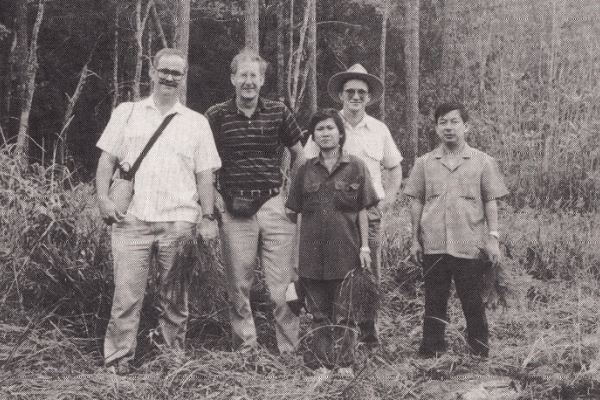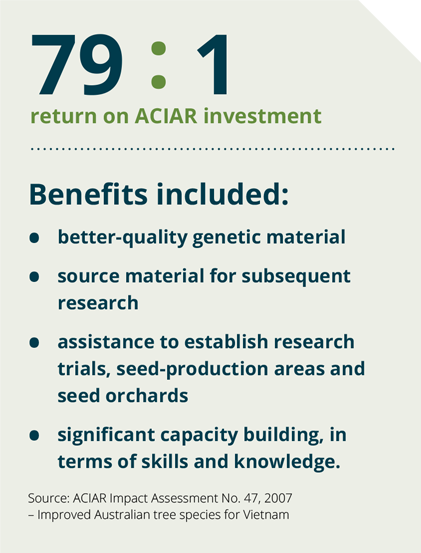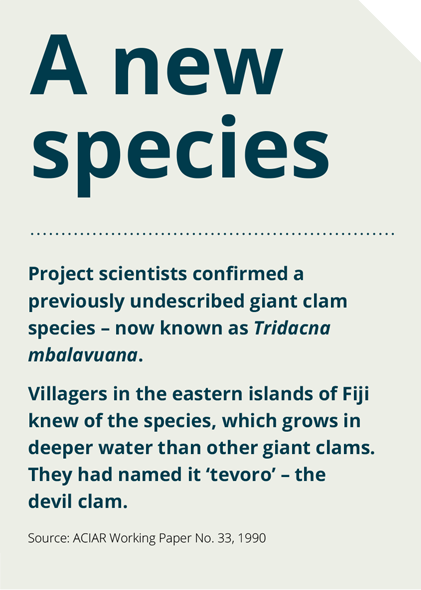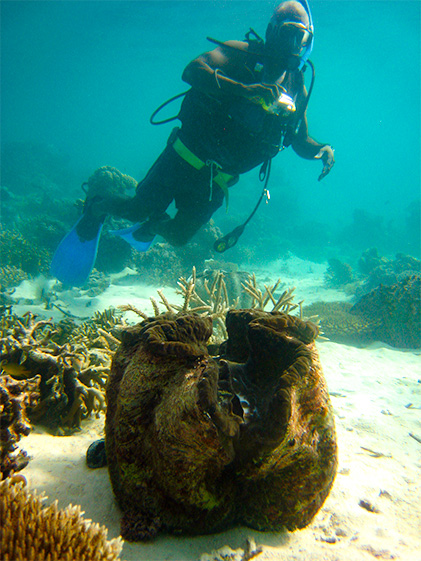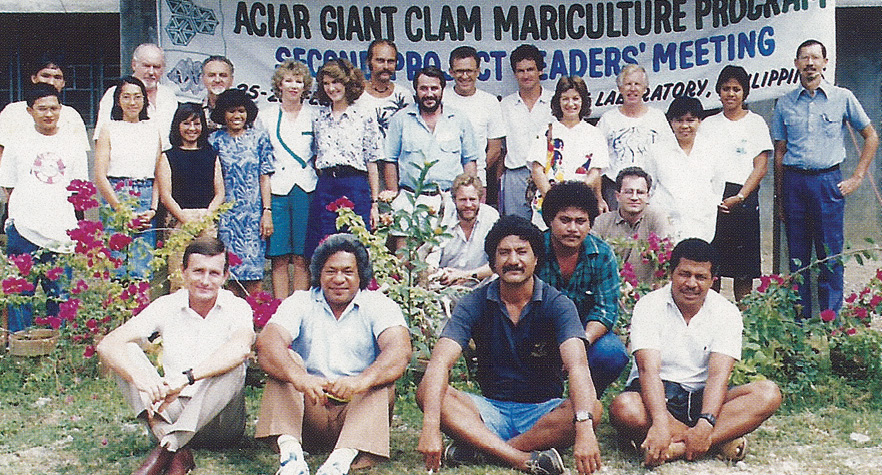Australian trees are farmed extensively throughout the world, especially in developing countries where some Australian plantation species are preferred to local forest species for fuelwood and manufacturing owing to their rapid growth and adaptability to harsh environments. ACIAR has long invested in the forestry sector of developing countries, brokering research that improves the domestication of Australian trees as a significant component of sustainable forest production systems in Asian economies.
Plantations of fast-growing eucalypt and acacia species meet a substantial part of the world’s growing demand for wood. On recent estimates, eucalypts alone will provide half the global demand for commercial hardwood timber by 2030.
A series of ACIAR-funded forestry projects in the 1980s helped build the eucalypt industry in China, to provide the huge amounts of wood needed by the large and developing nation. Today, China is the second-largest producer of eucalypts in the world, and the scale and success of the industry can be partly attributed to the role of ACIAR in the research.
ACIAR involvement in China started in 1984 when a delegation of ACIAR staff visited China at the invitation of the Chinese Minister for Agriculture, Mr He Kang, and were hosted by the Chinese Academy for Agricultural Science. The aim of the visit was to explore possible collaborative research programs.
The resulting program was developed with the expectations that the ACIAR contribution would be relatively small but with a well-defined focus, and that the research should be catalytic in nature so that the results could have a ‘ripple’ effect with implications for farming systems throughout China.
A high priority for China, which Australia had the capacity to support, was a forestry program to develop access to genetic resources and technology to provide better species for plantations and agroforestry. As a result, ACIAR established two forestry projects:
- trials to determine the most appropriate Australian tree species (mainly eucalypts, acacias and casuarinas) to grow in China
- studies of acacia silviculture, and of purifying tannin extracts from acacias.
The project leaders were from the CSIRO Division of Forestry, and the projects ran from 1985 to 1992 with the support of Chinese research agencies, Australian state agencies, such as the former Queensland Department of Forestry, and Australian universities.
The projects introduced over 100 species, and established 40 hectares of seed orchards and 1,400 hectares of eucalypt research plantations.
Some of the eucalypt varieties and hybrids were suitable for Chinese conditions, and complemented policies of the Chinese government to encourage tree planting and investment in the plantation industry. New eucalypt plantations provided substantial new sources of income for individual farmers and new local employment opportunities. Local infrastructure and facilities also benefited from the expanded industry, through local taxes on eucalypt wood sales or direct company support. Additionally, the projects trained researchers in China and plantation managers to manage the scale, productivity and sustainability of eucalypt plantations.

